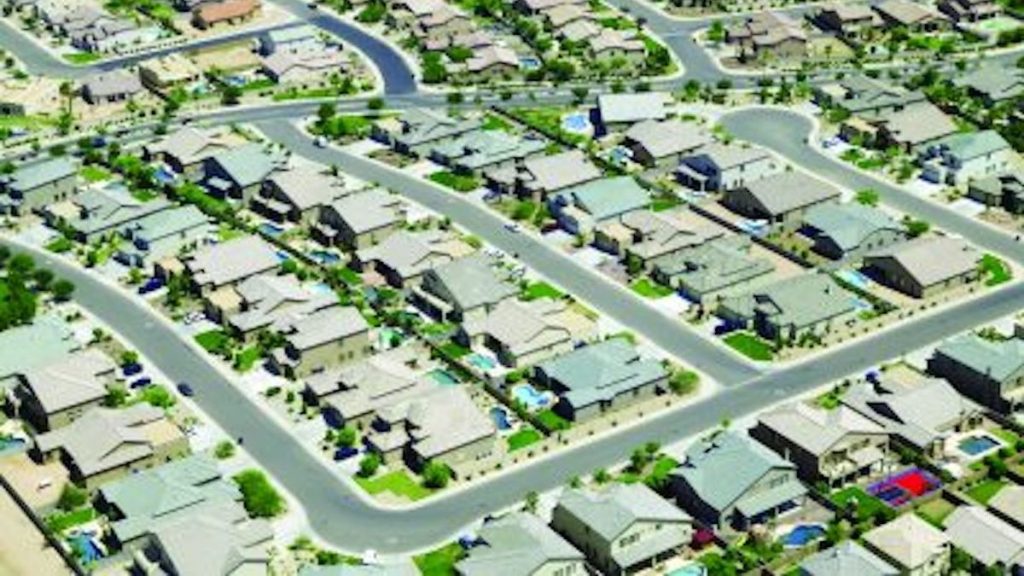The housing market will remain subdued until the Federal Reserve starts cutting rates next year, according to economists and housing pros following the central bank’s Wednesday announcement to leave the benchmark rate unchanged in the target range of 5.25%-5.5%.
Until interest rates come down, affordability challenges will continue to put first-time buyers on the sidelines, housing industry observers said. Real estate experts reiterated caution against further rate increases.
While Fed Chair Jerome Powell emphasized incoming data will determine whether the central bank will raise its federal funds rate at its next FOMC meeting in November, the “dot-plot” of rate projections showed policymakers foresee one more hike by the year-end. The bulk of central bank officials expect to have interest rates finishing the year at around 5.6%.
In an elevated rate environment, the lack of inventory continues to be the biggest challenge for many potential buyers, the Mortgage Bankers Association said.
“While homebuilder sentiment is clearly impacted by the recent surge in mortgage rates, permits for single-family homes provide a positive outlook for the pace of construction in the year ahead. If mortgage rates trend down in 2024 as we anticipate, the combination of more homes for sale and somewhat lower rates should support stronger purchase volume,” Mike Fratantoni, SVP and chief economist at the MBA.
The MBA expects mortgage rates should begin to reflect that the Fed’s moves in 2024 will be cuts – not further increases. MBA’s mortgage finance forecast projected the 30-year fixed mortgage rate to decline to 5.4% in 2024 and 5.1% in 2025.
Powell also noted in a press conference that because people locked in “very low rate mortgages, even if they want to move now, that would be hard because the new mortgage would be so expensive.”
Rates are most likely to stay elevated until 2024, said Danielle Hale, chief economist at Realtor.com, thus putting a damper on the number of home sales transactions.
“Higher mortgage rates have radically altered homebuyer purchasing power and have been a key factor in existing home sales dropping from a more than 6.5 million unit pace in early 2022 to the roughly 4 million unit pace in recent months,” Hale said.
More importantly, higher mortgage rates continue to keep existing homeowners sidelined, with as many as one in seven buyers out of the market because they don’t want to borrow at today’s much higher rates, Hale noted.
Short-term mortgage rate movement
In the short-term, mortgage rates are likely to bounce around a bit as the markets digest upcoming economic data, Melissa Cohn, regional vice president of William Raveis Mortgage, said.
Incoming data of job and CPI reports next month will provide more clarity on how strong the economy is. Reports on jobs and inflation will be released on October 6 and October 12, respectively.
“If the data reveals that inflation remains elevated and employment is still growing, then mortgage rates are likely to move up and we can look for what we hope to be the last rate hike of this cycle,” Cohn said.
The rapid ascent is mostly behind us but it will be a while before the economy sees any sign of a gradual descent, Marty Green, principal at mortgage law firm Polunsky Beitel Green, added.
“In my view, this means the mortgage interest rate environment will continue to bounce sideways through the next several months,” Green said.
Mortgage rates have been on an upward trend this year with rates in August surging to 7.23%—the highest since 2001.
Fed officials expect interest rates to be at 5.1% in 2024, up from the 4.6% projected in June. Officials expect fewer cuts in 2025 with the median estimate for the benchmark rate to be at 3.9%, up from 3.4%.
The committee raised its projections for growth, and is looking for a better-than-expected labor market as well, with the jobless rate peaking at 4.1%, rather than 4.5%.
Pushback against further rate increases
With two more scheduled FOMC meetings in November and December, housing experts cautioned against further rate increases.
The Fed must consider the potential economic damage arising from any future rate hikes, Lawrence Yun, chief economist at National Association of Realtors, reiterated his position.
“Commercial real estate has come under stress from higher interest rates, which will further negatively impact community banks due to their large exposure to the sector. Therefore, the Fed needs to wait and not raise rates. Possible interest rate cuts then need to be considered once inflation is fully under control,” Yun said.
Overall data point to an accelerating slowdown but continues to be mixed because of some lagging indicators, Green noted.
Unemployment rates and the CPI component lags measures of market rents by around a year.
“With rates elevated into restrictive territory, I expect the Fed to be patient and hold off on any additional increases until it becomes clearer that an additional rate hike is warranted,” Green said.






